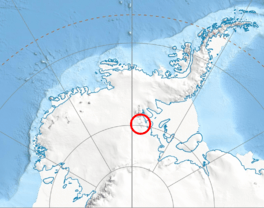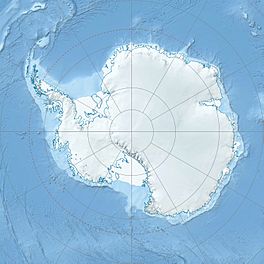Splettstoesser Glacier facts for kids
Quick facts for kids Splettstoesser Glacier |
|
|---|---|

Location of Heritage Range in Western Antarctica
|
|
| Type | tributary |
| Location | Ellsworth Land |
| Coordinates | 79°12′00″S 84°09′00″W / 79.20000°S 84.15000°W |
| Length | 35 nautical miles (65 km; 40 mi) |
| Thickness | unknown |
| Terminus | Minnesota Glacier |
| Status | unknown |
Splettstoesser Glacier (79°12′S 84°9′W / 79.200°S 84.150°W) is a very long river of ice found in Antarctica. It stretches about 35 nautical miles, which is over 64 kilometers! This huge glacier flows through a special area called the Heritage Range.
Contents
What is a Glacier?
A glacier is like a giant, slow-moving river made of ice. It forms over many years as snow piles up and gets pressed into thick ice. Glaciers are found in very cold places, like the North and South Poles, or on high mountains.
How Glaciers Move
Glaciers move very slowly, often just a few centimeters a day. They slide down hills or valleys because of their own heavy weight. As they move, they can carve out valleys and shape the land around them.
Where is Splettstoesser Glacier?
Splettstoesser Glacier is located in Ellsworth Land, which is part of Western Antarctica. It starts high up on a flat area called a plateau. From there, it flows east-northeast.
Journey Through the Heritage Range
The glacier travels through the Heritage Range, a group of mountains. It passes south of some important landmarks. These include the Founders Peaks and the Anderson Massif. Eventually, Splettstoesser Glacier joins a larger ice stream called the Minnesota Glacier.
How Splettstoesser Glacier Got its Name
This glacier was named after a geologist named John F. Splettstoesser. He was part of a group from the University of Minnesota. This group explored the area in 1961 and 1962. They were the first to study this part of Antarctica in detail.
Exploring Antarctica
Exploring Antarctica is a big challenge. Scientists and explorers face extreme cold and harsh conditions. They use special equipment to study the ice, rocks, and wildlife. Naming features like glaciers helps map the continent. It also honors the people who explore these remote places.


